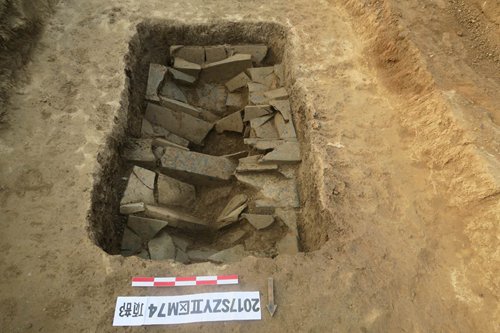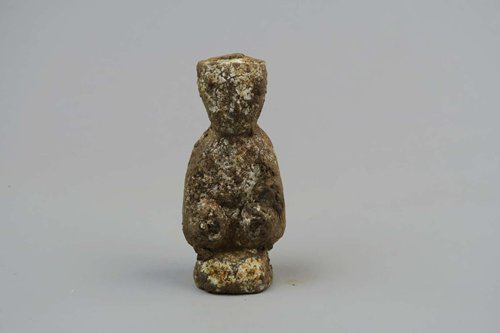More than 100 Han Dynasty tombs unearthed in Henan Province

Pottery figurines from the Han Dynasty discovered at the Zhoukou excavation site in Henan Province (Photo/Courtesy of Liu Haiwang)

Coins from the Han Dynasty's Wangmang period (Photo/Courtesy of Liu Haiwang)
On Monday, Henan Province's Cultural Relics Department announced that an excavation near Zhoukou, a prefecture-level city in the province, has unearthed tombs, pottery and coins dating from the Han Dynasty (206BC-AD220). According to department representatives, the relics will help provide a window into lives of the people and the major industries of the period.
More than 120 tombs were found at the excavation site, including 105 Han Dynasty tombs and 15 tombs from the Song (960-1279) and Qing dynasties (1644-1911).
A total of 487 pottery works were discovered along with the tombs. While a majority of these were food vessels, several household items and 40 pottery figurines were also found.
The coins unearthed at the site are believed to be Wuzhu coins, one of the longest-lived currencies in the world. Other coins discovered date from the Han Dynasty's Wang Mang period (AD 8-23) and the Song Dynasty.
"The excavation provides basic information that we can use to understand funeral rites during the Han, Song and Qing dynasties and also provides rich supplemental material for studying people's daily lives," an archaeologist with the excavation told the China News Service.

A Han Dynasty pottery figurine discovered at the Zhoukou excavation site in Henan Province (Photo/Courtesy of Liu Haiwang)


